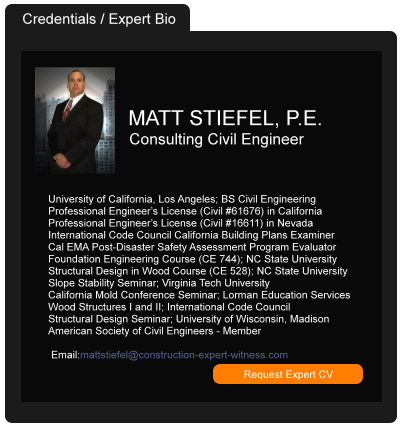Who's Who Legal Recognizes Two White and Williams Lawyers as Thought/Global Leaders in Insurance and Reinsurance
August 28, 2023 —
White and Williams LLPWho's Who Legal (WWL), in association with Thought Leaders: USA - Insurance and Reinsurance 2023, has recognized two White and Williams lawyers as leading practitioners in their field. WWL’s research process uses a combination of proprietary digital and in-person qualitative techniques and interviews.
WWL named Patricia B. Santelle and Randy J. Maniloff as Thought Leaders in Insurance and Reinsurance 2023. Thought Leaders base their results on recommendations and feedback from private practitioners in the industry, as well as from corporate counsel or other clients who have worked closely with the nominees. Both Patricia and Randy have also been recommended as Global Leaders in their field.
Patti is recognized by her clients and peers as a leading attorney in the field of complex insurance coverage, having devoted more than 30 years to the representation of insurance company clients. She is also a leader in the legal and business community, having served as the first female chair of a major law firm in Philadelphia. An advocate of community engagement, Patti supports a large number of business, community, law school and pro bono/volunteer initiatives in the region.
Read the court decisionRead the full story...Reprinted courtesy of
White and Williams LLP
New American Home Construction Nears Completion Despite Obstacles
January 29, 2014 —
Beverley BevenFlorez-CDJ STAFFConstruction of the New American Home in Las Vegas, Nevada, to be completed for the 2014 International Builders’ Show, has faced enormous challenges, according to Jennifer Goodman writing for Big Builder. Josh Anderson, owner of Element Building Co., told Goodman “he couldn’t have imagined what lay ahead when he signed on in fall 2012 to the project, which is co-sponsored by BUILDER and the NAHB.”
Challenges began during the “design phase” when Anderson “was troubled by the sitting of the house on its lot in the tony Sky Terrace subdivision.” Furthermore, he “balked at the floor plan, which encompassed a traditional design aesthetic and opulent touches.” The project’s architect, Barry Berkus, passed away in late 2012, and his son, Jeffrey Berkus, took over for him.
After the plans were “complete and approved by the city,” a labor shortage in Las Vegas made it “particularly difficult to find skilled framers.” The shortage also increased labor costs. Anderson also contended with weather anomalies: “Over the summer, the area set a record for the most consecutive wet days in 30 years. Winds blew sawdust and rain into the open structure, ruining 350 sheets of drywall and slowing down construction,” according to Big Builder.
The “mammoth project” is close to completion. Anderson told Big Builder, “I’ve always been a sucker for a challenge.”
Read the court decisionRead the full story...Reprinted courtesy of
Florida’s Supreme Court Resolves Conflicting Appellate Court Decisions on Concurrent Causation
December 21, 2016 —
Afua S. Akoto – Saxe Doernberger & Vita, P.C.The Supreme Court of Florida kicked off December with an opinion that determined which theory of recovery applies when multiple perils combine to create a loss, and at least one of those perils is excluded by the terms of a policy. In Sebo v. American Home Assurance Company, Inc.,1 the court resolved the conflict between the Florida Appellate Courts for the Second District and the Third District and declared the concurrent cause doctrine (CCD) as the more applicable theory of recovery over the efficient proximate cause doctrine (EPC).
The underlying dispute concerned damage to a home Sebo purchased in Naples, Florida in April 2005. The American Home Assurance Company (AHAC) insured the home under a manuscript policy specifically created for the property with limits of over eight million dollars. In May 2005, Sebo discovered major water leaks in the main foyer, master bathroom, exercise room, piano room, and living room of the home. In August, paint fell off the walls after it rained, and it became clear that the house suffered from major design and construction defects. When Hurricane Wilma struck in October, the house was further damaged by rain water and high winds, and was eventually demolished.
Read the court decisionRead the full story...Reprinted courtesy of
Afua S. Akoto, Saxe Doernberger & Vita, P.C.Ms. Akoto may be contacted at
asa@sdvlaw.com
Risk Spotter Searches Internal Data Lakes For Loaded Words
October 11, 2017 —
Tom Sawyer - Engineering News-RecordA tech start-up recently announced that it has been granted seven U.S. patents for a system that applies a “deep learning” algorithm to examine corporate e-mail databases and flag those with message fields or attachments containing language that might increase risk for a company involved in a federal discrimination lawsuit.
Read the court decisionRead the full story...Reprinted courtesy of
Tom Sawyer, ENRMr. Sawyer may be contacted at
sawyert@enr.com
Important Environmental Insurance Ruling Issued In Protracted Insurance-Coverage Dispute
May 16, 2018 —
Anthony B. Cavender - Gravel2Gavel Construction & Real Estate Law Blog The latest ruling in the long-running environmental insurance case, Olin Corporation v. Lamorak Ins. Co., was released on April 18, 2018, by Judge Rakoff of the U.S. District Court of the Northern District of New York. Judge Rakoff granted motions for summary judgment filed by Olin Corporation (Olin) and The London Market Insurers, and awarded Olin $55M for its claims against Lamorak Insurance Company (Lamorak).
As Judge Rakoff notes, “the overall litigation, having already outlived two federal judges, is now before the unlucky undersigned.” This ruling is in response to the Second Circuit’s most recent decision in Olin Corp. v. OneBeacon Americans Ins. Co.
Read the court decisionRead the full story...Reprinted courtesy of
Anthony B. Cavender, Pillsbury Winthrop Shaw Pittman LLPMr. Cavender may be contacted at
anthony.cavender@pillsburylaw.com
Construction Continues To Boom Across The South
September 09, 2019 —
Louise Poirier - Engineering News-RecordContractors reported revenue growth of $2 billion in 2018 and are optimistic heading into the second half of 2019. The looming threat of a downturn, though, weighs heavy on some industry leaders’ minds as does the constant threat of workforce shortages.
Reprinted courtesy of
Louise Poirier, Engineering News-Record
Ms. Poirier may be contacted at poirierl@enr.com
Read the court decisionRead the full story...Reprinted courtesy of
Disputes Will Not Be Subject to Arbitration Provision If There Is No “Significant Relationship”
November 29, 2021 —
David Adelstein - Florida Construction Legal UpdatesAs you know from prior articles, arbitration is a creature of contract. This means if you want your disputes to be resolved by binding arbitration, as opposed to litigation, you want to make sure there is an arbitration provision in your contract. If there are certain types of disputes you do not want subject to arbitration, you want to specify those types of disputes/claims in your arbitration provision. If you are not sure, make sure to discuss the pros and cons of arbitration with your counsel when drafting and negotiating the contract. However, even with a broad arbitration provision, there are times where a dispute may still fall out of the scope of the arbitration provision, i.e., the dispute is not arbitrable. If this occurs, such dispute will be resolved by litigation. Parties that have buyer’s remove and do not want to arbitrate their dispute may try to make this argument that the dispute is not subject to the scope of the arbitration provision. There are times this argument carries weight because the dispute has no significant relationship to the agreement with the arbitration provision, as shown below.
In Deweees v. Johnson, 46 Fla. L. Weekly D2356b (Fla. 4th DCA 2021), a plaintiff purchased a home in a private residential community. The purchase contract with the developer contained a broad arbitration provision that materially provided that, “all post-closing claims, disputes, and controversies…between purchaser and seller will be resolved by binding arbitration except those arising under section G.5 and G.6 above.” Dewees, supra. Sections G.5 and G.6 provided that the purchaser will not interfere in the sales process with other purchasers and will not interfere with workmen during the construction process. There was also a workmanship and structural defect warranty for the dwelling that also contained an arbitration provision.
Read the court decisionRead the full story...Reprinted courtesy of
David Adelstein, Kirwin Norris, P.A.Mr. Adelstein may be contacted at
dma@kirwinnorris.com
Real Estate & Construction News Round-Up (03/08/23) – Updates on U.S. Mortgage Applications, the Inflation Reduction Act, and Multifamily Sector
March 20, 2023 —
Pillsbury's Construction & Real Estate Law Team - Gravel2Gavel Construction & Real Estate Law BlogThis week’s round-up explores the cooling housing market and plummeting mortgage applications, potential tax-savings as a result of the 2022 Inflation Reduction Act (IRA), and new developments in the multifamily sector.
- Rising interest rates are impacting affordability and cooling the U.S. housing market, driving mortgage applications to lowest levels in decades. (Nicole Friedman, The Wall Street Journal)
- A number of companies are going all out to entice workers back to the office, and as new data on New York City emerges, upscale offices might help do the trick. (Emily Peck, Axios)
- For real estate developers and investors across the U.S., tax-saving opportunities are popping up as a result of the Inflation Reduction Act of 2022. (David Harlan & Laura Theiss, Dallas Business Journal)
Read the court decisionRead the full story...Reprinted courtesy of
Pillsbury's Construction & Real Estate Law Team


































































